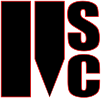If you'd like to have your microfilm digitized we'll need to know what type of microfilm you have. Just as in the digital document world were catch-all phrases like Document Management, Content Management, ECM, and Document Imaging may have a similar meaning, and the word microfilm has the same inherent problem. Traditionally the word microfilm has been the catch-all phrase used for all formats of this media. So here is a breakdown of some of the differnt types of microfilm.
Microfiche
Microfiche is made of a flat sheet of film usually with a polyester base on which multiple pages are captured in reduced size. The standard size is 105mm x 148mm (about 4 inches x 6 inches).
COM fiche (Computer Output Microfilm) are 105 mm x 148 mm sheets which have individual frames arranged in a permanent grid pattern and are generated by computer processes, hence the name. Each sheet will have an area at its top with an eye readable title describing its contents. COM fiche are usually of a higher reduction ratio (typically 42x reduction in size of what it would look like in hard copy). A single sheet of this fiche can hold up to 300 frames. Jacket microfiche are made of sleeves that hold strips of 16mm or 35mm rollfilm, or a combination of both, stored in a clear Mylar jacket. Jackets are typically 4 inches x 6 inches and can hold up to five strips of film, typically in a horizontal orientation. A title strip area across the top of the jacket will usually have the microfiche’s title and indicate its contents.
Roll Film
Microfilm in roll form is a length of film containing a sequential series of images or frames. When there is one row of images down the length of the film, the film is called simplex. When there are two rows of images running down the length of the film, it is called duplex. Duplex film is typically one that shows both the fronts and the backs of each pictured document. There are several other formats in which documents can appear on microfilm rolls, but simplex and duplex are the most common.
Roll film typically comes in only two widths: 16mm (millimeters), which is about ¾ of an inch wide, and 35mm, about 1 ½ inches wide.
16mm microfilm comes in rolls that are either 100 feet or 215 feet long. 16mm roll film is most often used for office-sized 8-1/2″ x 11″ / A4 documents or for financial records, like checks. It can also be found in government offices of all kinds or insurance companies. 215 foot 16mm microfilm is most frequently used for document types that would have both the front and the backside captured at the same time (e.g. checks, insurance forms and medical forms). 35mm microfilm comes in 100 foot rolls. 35mm roll film is used where larger frames are required due to larger source documents. Newspapers, architectural drawings, and engineering plans are common large-format documents that are found on 35mm roll film. 35mm roll film is often the microfilm of choice for archiving older and historic documents so that the original documents can be captured at a higher resolution.
ANSI Cartridge
ANSI cartridges are essentially 16mm roll film in a square, hard plastic case (a cartridge). Rather than a single square hole in the middle of a plastic spool, ANSI cartridges have a metal hub with four smaller, round holes. They often require a special adapter to allow them to be loaded onto a reading device. Other than their cartridge format, ANSI cartridges are identical to normal 16mm roll film in terms of what types of images they’re typically used to store.
Aperture Card
Aperture Cards are similar to the very old IBM-punch cards (Hollerith cards), but have a hole (aperture) into which a single 35mm microfilm frame has been mounted. At one time, machinery existed to automatically store, retrieve and sort aperture cards with a high level of automation. The punched holes you see on an aperture card were machine-readable metadata that is associated with the microfilm image. The metadata, title information, is frequently printed across the top of the card for visual identification, and the hole punches may not always be used. Aperture cards have traditionally been used in engineering applications.
If you have questions about what type of microfilm you have or would like information regarding converting your microfilm to digital images, please give us a call today at (800) 866-9212.
